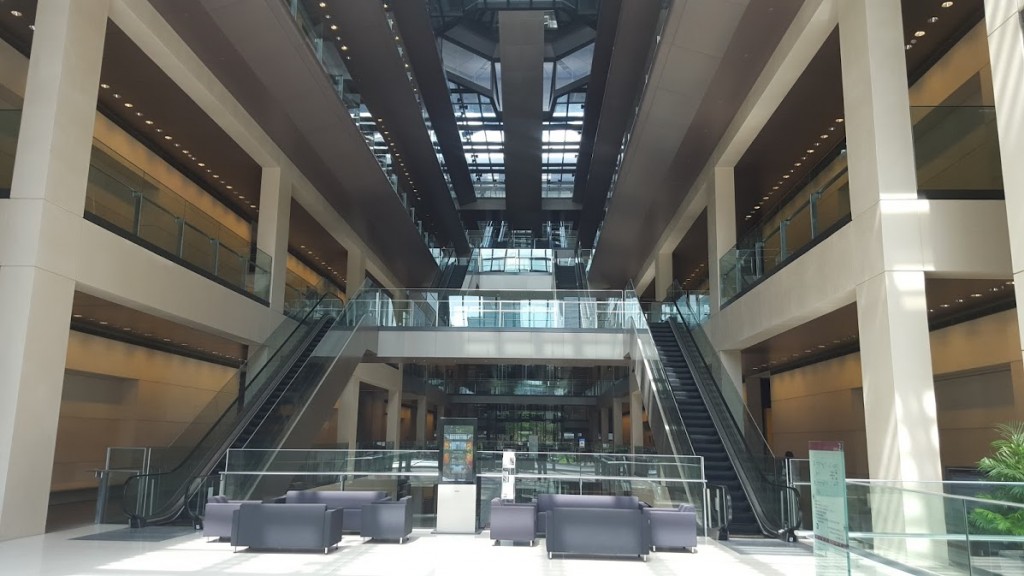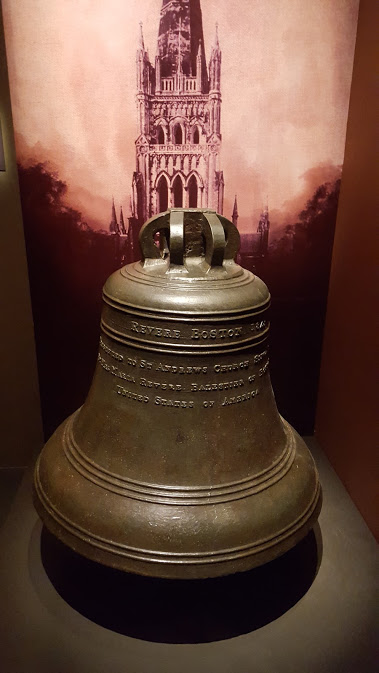During my mileage run to Singapore, I had about 36 hours to sightsee. It is a beautiful country, and the people are extremely warm and friendly. One of the highlights of the trip was my visit to the Singapore Supreme Court. Singapore was a British Colony until World War II, so they have a common law system not dissimilar to ours.
The building is located on Supreme Court Lane–a much more apt address than One First Street N.E.

Even better, the Court is located across the street from the Parliament, so the intersection is perfect: Supreme Court Lane and Parliament Place. A perfect illustration of the Separation of Powers!

The building itself is absolutely striking. It is a modern structure with what looks like a UFO on the roof (It is actually an observation deck with panoramic views of the entire city and the harbor).

The sign from the street simply says, “Supreme Court.”

This is the view from the lobby. The Court is eight floors, with a series of escalators from one to the next. The escalators in Singapore–like in other countries–are off by default, and only start when they sense movement nearby. This is somewhat off-putting when I was walking from a distance, and I thought the escalators were closed.

I paid a trip to the Supreme Court Library.

A quick perusal only revealed a handful of American Law Books, including Bryan Garner’s “Blacks Law Dictionary,” Larry Tribe’s ConLaw Treatise, and a book by Richard Posner.


Unfortunately, the Court was out of session that day, so I could not see the chamber. I appreciated this sign, which made it exactly clear what was prohibited.

The Court also had an educational section, offering a history of the institution.
Fortunately, we never stuck with the wigs from English Courts.
During World War II, Singapore was under Japanese occupation. There was an exhibit showing how the courts continued to function, somewhat, even under rule by Imperial Japan.

A few other related legal matters. First, at the National Museum of Singapore, they had on display a bell forged in Boston by Paul Revere’s daughter, Maria Revere Balestier. She was married to the first American Consul to Singapore. It was given to St. Andrew’s Church.


Second, Singapore has an extremely strict criminal justice system. This was made painfully obvious on the Customs declaration form. It said “Warning: Death for Drug Traffickers Under Singapore Law.”

Singapore still uses a bamboo cane as a form of corporal punishment–American tourists are not exempt–and hangs prisoners as a form of execution.
Third, the National Museum of Singapore, I was struck by this advertisement, urging teens not to get married. A the bottom, it says “Family Planning/Sterilisation Information Service.”

The placard says, “The government promoted voluntary sterilisation as a method of family planning for couples who had already had two children.

Finally, I used Uber to get around Singapore, and was really happy with the service. Although, I was shocked how difficult it was to acquire a car. One of my drivers, who had a 5-year old Fiat that may cost about $15,000 in the United States, paid nearly $90,000 for it. Why? To buy a car, you must bid on a “Certificate of Entitlement.” The government uses these to ration the number of cars on the extremely congested roads of Singapore. The certificate cost itself cost more than the car–about $20,000. On top of that, the government charges a 180% tax on import fees. The certificate lasts only 10 years, at which point you have to renew it at the market value rate. As a result, it becomes cost-prohibitive to keep a new car. Virtually all of the cars on the road are modern. The Uber driver told me that a BMB could cost $250,000, and a Bentley could cost nearly $2 million.
I would definitely encourage you to visit Singapore. It was a fun trip.




